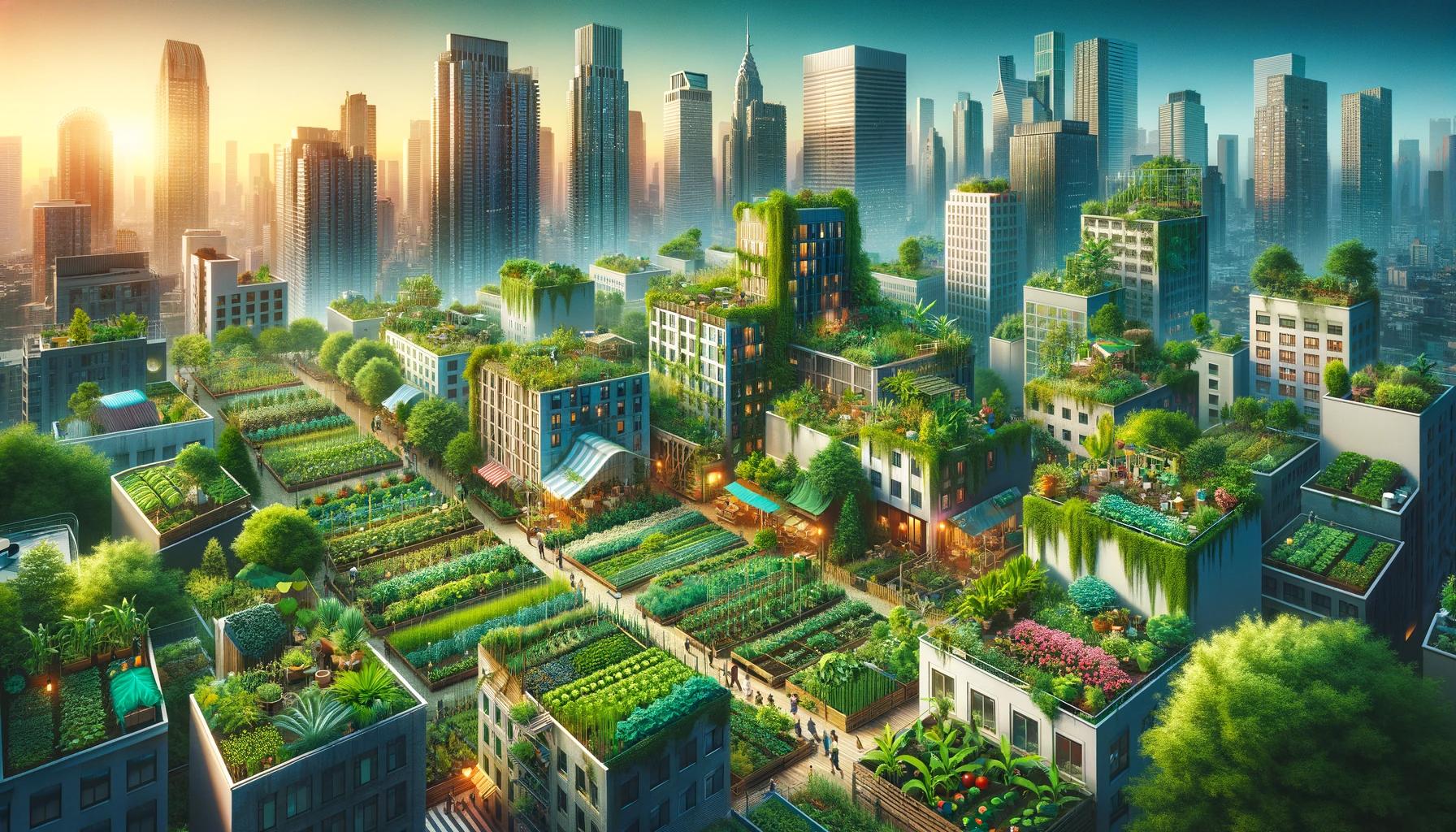Urban landscapes, often dominated by concrete and skyscrapers, are experiencing a green revolution. Urban gardening, the cultivation of plants within city limits, is transforming rooftops, balconies, and vacant lots into vibrant green spaces. This article explores the rise and relevance of urban gardening in modern cities.
1. Benefits of Urban Gardening
- Food Security: Urban gardens can provide fresh, local produce, decreasing dependency on long-distance food supply chains1.
- Environmental Impact: Gardens act as carbon sinks, absorbing CO2. They also reduce the urban heat island effect, offering cooler urban environments2.
- Community Building: Community gardens foster social connections, promoting a sense of community among urban dwellers3.
2. Types of Urban Gardening
- Rooftop Gardens: Utilizing building rooftops to cultivate plants helps in insulation and improves air quality4.
- Vertical Gardens: Ideal for limited spaces, these gardens grow vertically on walls or specialized structures5.
- Balcony and Window Gardens: For apartment dwellers, balconies and windowsills can become miniature green oases6.
3. Sustainable Urban Agriculture Practices such as composting, rainwater harvesting, and organic farming ensure that urban gardening remains sustainable and environmentally friendly7.
4. Challenges and Solutions Urban gardening faces challenges such as limited space, soil contamination, and water scarcity. Innovations like hydroponics, aeroponics, and the use of specially formulated soil can address these challenges8.
5. Urban Gardening and Mental Health Engaging with nature, even in an urban setting, can offer mental health benefits. Gardening can be therapeutic, reducing stress and promoting a sense of well-being9.
Conclusion Urban gardening, more than just a trend, is a testament to human adaptability and our intrinsic connection to nature. As cities continue to grow, these green pockets promise a sustainable, connected, and verdant urban future.
References:
- Zezza, A., & Tasciotti, L. (2010). Urban agriculture, poverty, and food security: Empirical evidence from a sample of developing countries. Food Policy, 35(4), 265-273.
- Bowler, D.E., Buyung-Ali, L., Knight, T.M., & Pullin, A.S. (2010). Urban greening to cool towns and cities: A systematic review of the empirical evidence. Landscape and Urban Planning, 97(3), 147-155.
- Okvat, H.A., & Zautra, A.J. (2011). Community gardening: A parsimonious path to individual, community, and environmental resilience. American Journal of Community Psychology, 47(3-4), 374-387.
- Speak, A.F., Rothwell, J.J., Lindley, S.J., & Smith, C.L. (2013). Urban particulate pollution reduction by four species of green roof vegetation in a UK city. Atmospheric Environment, 61, 283-293.
- Dubbeling, M., & de Zeeuw, H. (2010). Urban agriculture and climate change adaptation: ensuring food security through adaptation. RUAF Foundation.
- Danso, G., Drechsel, P., & Fialor, S.C. (2002). Review of studies and literature on the profitability and sustainability of urban and peri-urban agriculture. IWMI.
- Lovell, S.T. (2010). Multifunctional urban agriculture for sustainable land use planning in the United States. Sustainability, 2(8), 2499-2522.
- Orsini, F., Kahane, R., Nono-Womdim, R., & Gianquinto, G. (2013). Urban agriculture in the developing world: a review. Agronomy for sustainable development, 33(4), 695-720.
- van den Berg, A.E., & Custers, M.H. (2011). Gardening promotes neuroendocrine and affective restoration from stress. Journal of Health Psychology, 16(1), 3-11.


